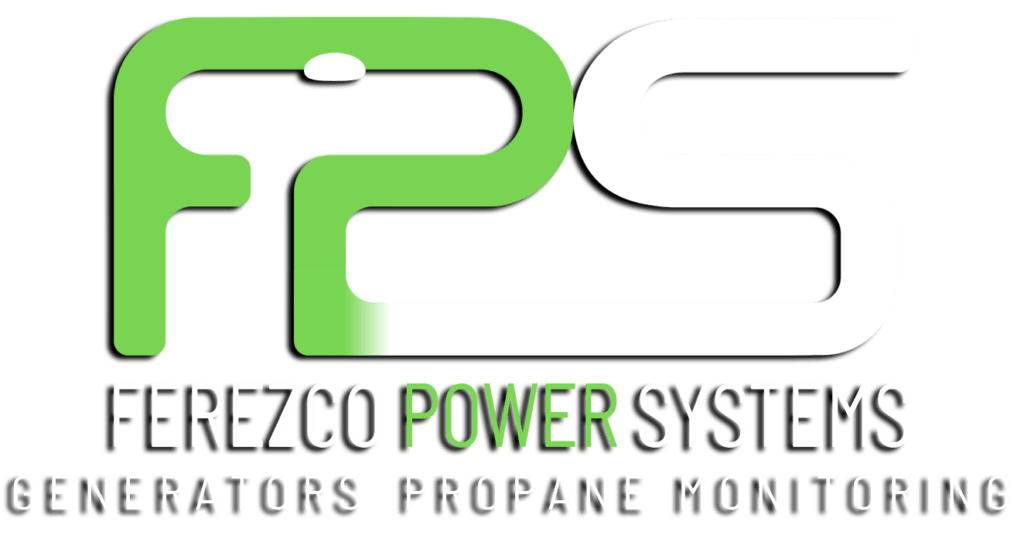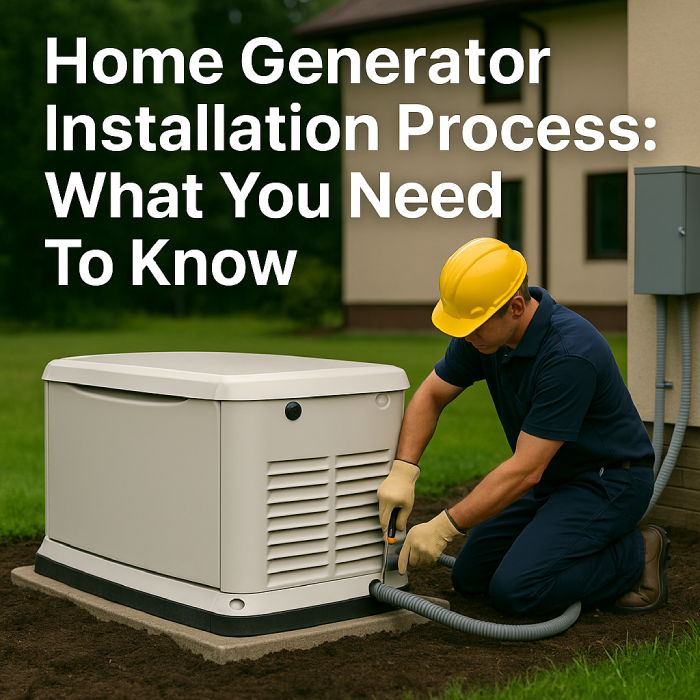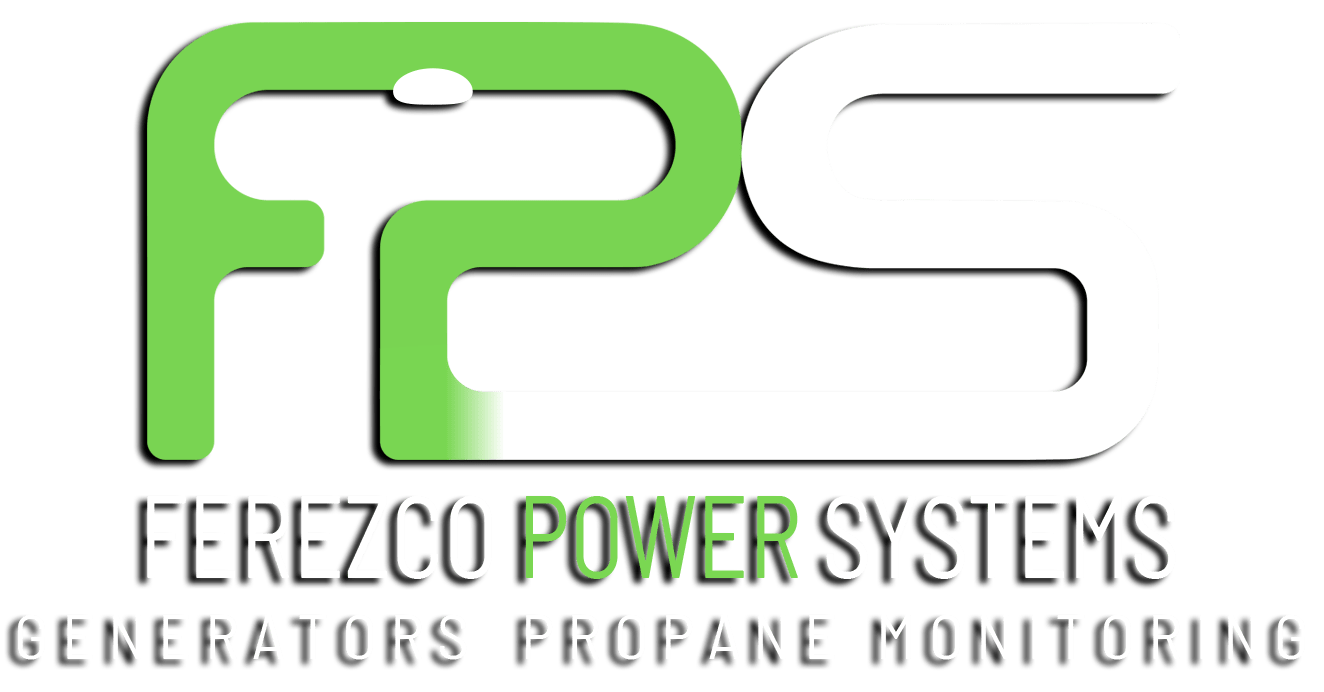Power outages can strike at any time. This leaves our homes disturbed, affecting everything like security, comfort, and other services. But a properly installed backup generator can get these things back to you even in an emergency. This blog will tell you about the professional installation processes of different generator types. There is a special focus on critical generator commissioning and testing procedures to make sure it gives you reliable performance.
Generator Options for Home Backup Power
Before anything, you should understand the three main backup power options that homeowners can choose from in 2025:
- Standby Generators: Permanent, whole-home solutions that activate automatically during outages, usually powered by natural gas or propane.
- Portable Generators: Mobile units that will give you temporary power to selected appliances, usually fueled by gasoline or propane.
- Solar Battery Systems: Clean energy solutions that store electricity generated from solar panels or the grid.
Each system has different installation requirements. All of them benefit from proper commissioning and testing to make sure that it is working at their best performance.
Let’s look at each installation process in detail!
Related: How to Install a Manual Transfer Switch for a Backup Generator in 15 Steps
Standby Generator Installation Process
These units are the gold standard for whole-home backup power. These permanent installations need a lot of planning and professional expertise.
1. Professional Assessment and System Design
A qualified electrician should conduct a load calculation to decide your home’s power requirements during outages. This considers:
- Important circuits (refrigeration, heating/cooling, security, medical equipment)
- Luxury circuits (entertainment systems, additional lighting)
- Total electrical demand during peak usage
Based on this, the technician will recommend a right-sized generator. Usually, for average homes a 10kW and 24kW and for larger ones 30-48kW systems are the best.
2. Permitting and Code Compliance
Before starting to install, get all the needed permits from local authorities. Professional installers should know:
- National Electrical Code (NEC) Article 702 requirements for optional standby systems.
- Local setback needs (minimum distances from structures)
- Noise laws that need to be considered
- Gas line installation codes (if applicable)
- NFPA 37 standards for generator placement
3. Site Preparation and Foundation Installation
The generator needs a stable foundation.
- A level concrete pad 4-6 inches thick
- Dimensions that extend 6-12 inches beyond the generator footprint
- Proper drainage to prevent water collection
- Accessibility for maintenance and service
- Following the manufacturer’s instructions for anchoring
4. Fuel System Installation
Depending on your generator type, a licensed professional will:
- Connect to existing natural gas lines or install new ones
- Set up a propane tank and connection system
- Install fuel lines with the right regulators and shutoff valves
- Pressure-test all connections to be safe
- Check that fuel flow rates meet manufacturer specifications
5. Electrical System Integration
A certified electrician will:
- Install an automatic transfer switch (ATS) near the main electrical panel
- Connect the generator to the ATS with the right conductors
- Install a subpanel for important circuits, if it is needed
- Do proper grounding according to NEC requirements
- Install surge protection to safeguard electronics
6. Control System Setup
Modern standby generators include sophisticated control systems that:
- Monitor utility power for outages
- Automatically start the generator when needed
- Transfer electrical loads between the utility and generator power
- Provides status updates and maintenance alerts
- Allow remote monitoring through apps
7. Generator Commissioning and Testing
When you are done installing, you need to do a thorough commissioning. It will make sure that your system will perform better in an actual outage. Take these steps to ensure this:
- Initial startup verification
- Load testing under various conditions
- Transfer switch operation confirmation
- Safety system validation
- Performance optimization
We’ll cover the complete generator commissioning and testing checklist in detail later in this article.
Related: The 10 Best Solar Generators of 2025 (Expert-Tested & Reviewed for Every Budget and Need)
Portable Generator Setup and Safe Operation
This is less complicated than a standby installation. But these units still need careful setup for safe operation:
1. Capacity Planning and Selection
Select a portable generator based on:
- Wattage requirements of necessary appliances
- Starting (surge) watts vs. running watts
- Fuel type preference (gasoline, propane, or dual-fuel)
- Runtime needed between refuelling
- Noise considerations
Most households need between 3,000-7,500 watts to power essential appliances during an outage.
2. Safety-First Placement
Always position portable generators:
- Outdoors, in a well-ventilated area
- At least 20 feet from doors, windows, and vents
- On a dry, level surface protected from rain
- Away from flammable materials
- In a location protected from theft
3. Electrical Connection Options
Choose between:
- Direct Appliance Connection: Using heavy-duty, outdoor-rated extension cords (12-14 gauge) to connect appliances directly to the generator.
- Transfer Switch Installation: A safer, more convenient option where a licensed electrician installs a manual transfer switch that:
- Connects to your home’s electrical panel
- Reduces dangerous backfeeding
- Allows you to power selected circuits through your home’s wiring
- Usually costs $500-$1,000 plus installation
4. Operational Procedures
For safe working:
- Start the generator before connecting loads
- Add loads gradually to prevent overloading
- Watch fuel levels and refill when the engine is cool
- Keep a carbon monoxide detector in your home
- Do regular maintenance, including oil changes
- Run monthly tests for readiness
5. Commissioning and Testing
Even portable generators benefit from a commissioning process:
- Check the output voltage with a multimeter
- Test all receptacles under load
- Confirm stable operation with various loads
- Check the automatic idle control function
- Time runtime at different load levels
Solar Battery Backup System Installation
It is the newest technology in home backup power. It combines clean energy with good performance:
1. System Sizing and Design
Work with a certified solar installer to:
- Calculate your energy storage needs based on loads
- Select the right battery capacity (usually 10-30kWh for average homes)
- Decide if solar panels will be charging the battery
- Design a system that meets both daily usage and emergency backup needs
2. Equipment Selection
Choose parts based on:
- Battery chemistry (lithium-ion, lithium iron phosphate, etc.)
- Inverter capacity and compatibility
- Watching and control systems
- Expandability for future needs
- Warranty and expected lifespan
3. Professional Installation Process
A certified installer will:
- Mount batteries in a temperature-controlled, ventilated area
- Install an inverter for battery power conversion
- Set up a critical loads panel for important circuits
- Integrate monitoring and control systems
- Connect to solar panels if applicable
4. Grid Integration
For grid-tied systems:
- Install automatic transfer equipment that safely disconnects from the grid during outages
- Configure anti-islanding protection to avoid backfeeding the grid
- Program time-of-use settings for daily operation
- Set up grid charging parameters if applicable
5. Commissioning and Testing
Solar battery systems need specialised commissioning:
- Verification of proper battery charging cycles
- Testing automatic transfer during simulated outages
- Confirmation of critical load support
- Validation of monitoring and remote control functions
- Performance assessment under various conditions
Related: 6 Best Generators for Home in 2025 to Keep the Lights On During Outages
Choosing the Right Home Generator
Each backup power system has its strengths, and the right choice depends on your home size, budget, and energy priorities.
| System Type | Best For | Pros | Cons |
| Standby Generator | Whole-home backup, long outages | Automatic operation, high capacity, seamless integration | Higher upfront cost, professional installation required |
| Portable Generator | Short-term outages, budget-conscious users | Affordable, flexible, and easy to store | Manual setup, limited capacity, safety risks |
| Solar Battery Backup | Eco-conscious homes, solar panel users | Clean energy, low noise, eligible for tax incentives | Requires solar panels or grid charging; cost varies |
When choosing your generator, consider:
- Power Needs: Identify important vs. luxury circuits.
- Fuel Source: Natural gas, propane, gasoline, or solar?
- Automation: Do you want automatic or manual operation?
- Budget: Factor in equipment, permits, and installation.
- Local Regulations: Make sure you’re up to code and zoning compliant.
Conclusion
Whether you choose a standby generator, portable unit, or solar battery backup system, proper installation and commissioning are important to make sure of safety, compliance, and reliable performance during power outages. Each system has unique requirements, but they all share one goal: keeping your home powered when the grid goes down.
By working with certified professionals and following best practices for generator setup, load planning, and system testing, homeowners can enjoy peace of mind and uninterrupted comfort. Don’t wait for the next blackout to take action. Invest in home generation installation that’s done right the first time.
If you’re considering backup power solutions for your home, consult a licensed technician who knows everything about generator installation, commissioning, and safety protocols. A properly installed system isn’t just convenient, it’s essential.
Question & Answer About Home Generator Installation Process
How much does it cost to install a home generator?
The average cost to install a home generator ranges from ₹3,00,000 to ₹6,00,000, depending on the generator type, power output, and installation complexity. Standby generators with automatic transfer switches are more expensive than portable units.
Can I install my own home generator?
While portable generators can be set up by homeowners, installing a standby generator requires professional installation to ensure safety, code compliance, and correct integration with your home’s electrical system.
How much is a generator for a 2,000 sq ft house?
A generator suitable for a 2,000 sq ft home typically costs between ₹2,50,000 to ₹5,00,000. This includes enough capacity (around 14–20 kW) to power essentials like lighting, appliances, and HVAC.
What size generator will run a normal house?
A typical home needs a generator with 7,000 to 20,000 watts (7–20 kW), depending on the number of appliances, HVAC systems, and whether you want full or partial backup during power outages.
Related: 10+ Best Portable Generators for Reliable Power Anytime, Anywhere (2025 Updated)




